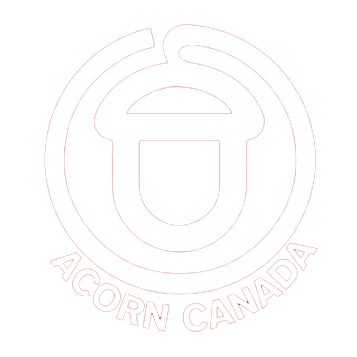Hill Times: Opinion: Feds’ affordable internet program will help a fraction of those who need it
Posted April 25, 2022
Posted April 25, 2022
 Innovation Minister François-Philippe Champagne, Seniors Minister Kamal Khera, and Rural Economic Development Minister Gudie Hutchings recently announced low-income seniors would be added to the expanded Connecting Families program, designed to bring $20-per-month high-speed internet to families in need. ACORN Canada, a national membership-based organization of low- and moderate-income people, won the Connecting Families program in 2018. The first phase of the program targeted families with children that receive maximum Canada Child Benefit (CCB) to give them access to internet for $10 a month. So, prima facie, the expansion of the program to low-income seniors seems to be great news. It could potentially help tens of thousands of seniors struggling to connect to the internet.
Innovation Minister François-Philippe Champagne, Seniors Minister Kamal Khera, and Rural Economic Development Minister Gudie Hutchings recently announced low-income seniors would be added to the expanded Connecting Families program, designed to bring $20-per-month high-speed internet to families in need. ACORN Canada, a national membership-based organization of low- and moderate-income people, won the Connecting Families program in 2018. The first phase of the program targeted families with children that receive maximum Canada Child Benefit (CCB) to give them access to internet for $10 a month. So, prima facie, the expansion of the program to low-income seniors seems to be great news. It could potentially help tens of thousands of seniors struggling to connect to the internet.
But the good news ends there. ACORN, through its “Internet for All” campaign, has in the past highlighted the issues that have plagued the first phase of the program. The Connecting Families program 1.0 was supposed to help connect low-income families with children. But the program continues to suffer for many reasons: first, it covers only some families (those that receive maximum CCB); second, there is a limit to how many families receiving maximum CCB can benefit; third, the internet speed offered in phase one was too low at 10 megabits per second (Mbps) forcing many to opt-out; and lastly, the program made the participation of telecom companies voluntary.
How is Connecting Families 2.0 different? Have we learned any lessons? The second phase with a higher speed of 50/10 Mbps at $20 per month for 200 gigabytes of data will continue to cover families and now include seniors, as well.
But the latest phase of the program is again targeted to seniors who receive maximum Guaranteed Income Supplement, or GIS. Worse still, not all seniors receiving maximum GIS or families receiving maximum CCB will get a letter from the government notifying them that they are eligible, and even those who do might not be able to benefit from it.
According to the program’s website, a total of 220,000 families and seniors can benefit from the program. As of March 29, 2022,175,000 letters have gone out to families and 133,000 letters have gone out to seniors with the access code.
How do these numbers fare in relation to overall poverty numbers? In 2016, Statistics Canada recorded 790,820 (14.5 per cent) of older Canadians living on low income. And in 2019, 1.3 million children (17.7 per cent) were living below the Census Family Low Income Tax Measure After Tax. The target of 220,000 covers only 10 per cent of all low-income families and seniors.
Not only does the program leave out so many low-income families and seniors, it also does not cover people with disabilities or other low-income individuals who have no means to access the internet. The uptake is even lower. According to data shared by the innovation minister’s office in August 2020, approximately 55,000 families were benefitting from the program.
Though Champagne’s office won’t state it, families and seniors who receive the letters with the access code are expected to enroll as quickly as possible due to limited spots. It’s almost on a first come, first served basis. It’s almost on a first come, first serve basis. Even if the senior or family are able to rush to register themselves, they still might not benefit if the telecom does not provide service in that location.
What forces the government to limit the reach of the program is the heavy dependence on the interest and voluntary uptake by big telecoms that make billions of dollars. Eastlink in Nova Scotia did not participate in the first phase of the program, and likely won’t do so again.
This makes us wonder whether, by making this announcement, the government is making any progress toward ensuring that 98 per cent of Canadians have access to high-speed internet by 2026, and 100 per cent by 2030–targets already too far away and that seem to be elusive with the non-inclusive, limited nature of the main federal program that aims to connect people.
If the pandemic taught us something, it was the dire need for affordable, high-speed internet. Seniors, people with disabilities, and so many other vulnerable people were left in isolation without the internet while governments kept stressing the significance of staying home and staying connected. ACORN’s Internet for All campaign urges the federal government to expand the Connecting Families program to all low-income people immediately. All low-income people need affordable, high-speed internet. We cannot wait until 2030.
*
Ray Noyes and Marijke Grijm are members of ACORN Canada, an independent national organization of low- and moderate-income people with 160,000+ members with more than 20 neighbourhood chapters across nine cities.
*
Source: Hill Times

